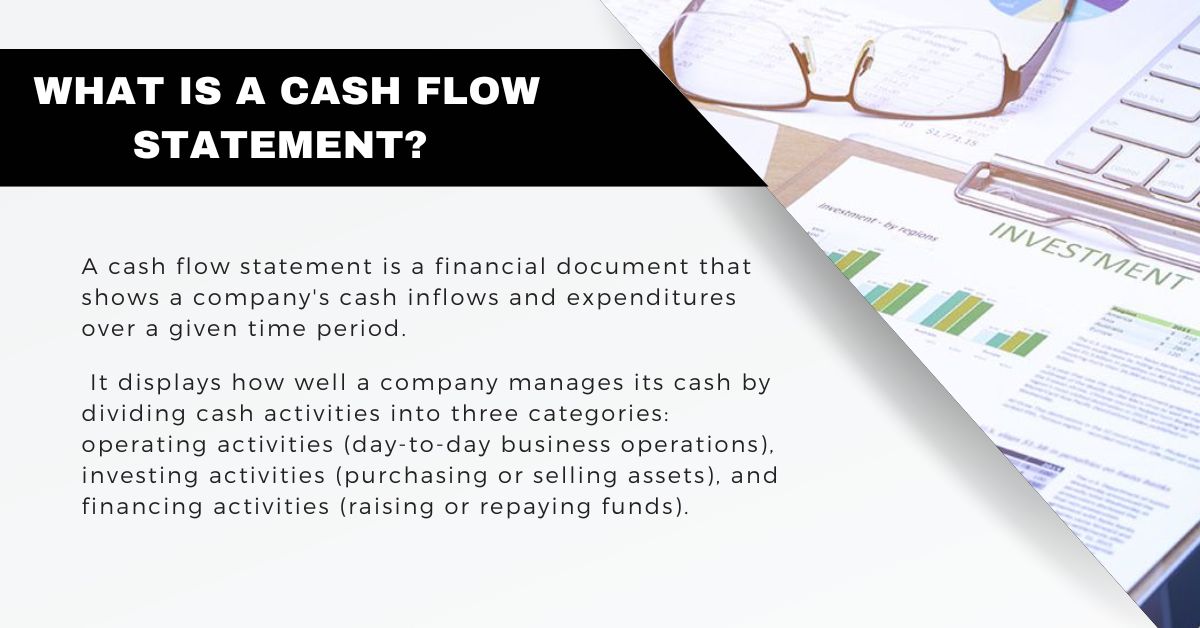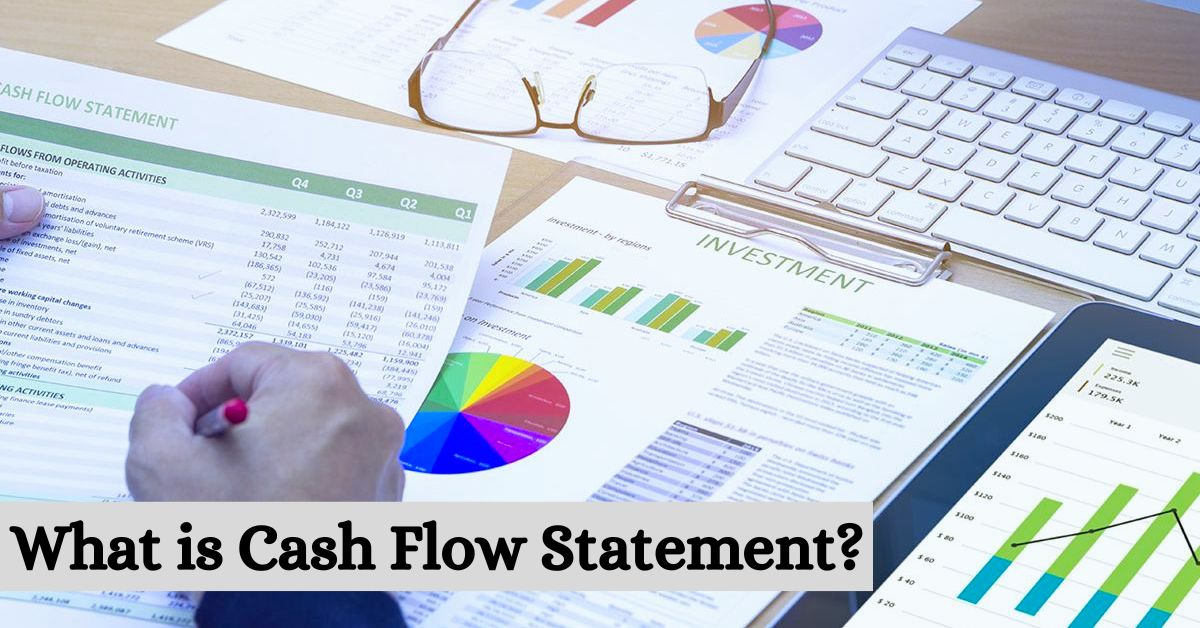When you’re a working professional, business owner, entrepreneur, or investor, learning how to read and decode a cash flow statement can help you extract valuable information about a company’s financial health.
If you’re an investor, this information will help you decide whether to invest in a company. If you’re a business owner or businessman, it can assist you in understanding business performance and adjusting critical projects or plans. If you’re a manager, it can help you manage budgets more effectively, supervise your staff, and build stronger relationships with leadership, ultimately allowing you to play a bigger role in the company.
Not everyone has financial or accounting knowledge. Non-finance professionals may struggle with understanding the concepts underlying a cash flow statement and other financial papers.
To help you fully understand how to read and analyze a cash flow statement, here’s everything you need to know.
What is Cash Flow Statement?

A cash flow statement is a financial document that shows a company’s cash inflows and expenditures over a given time period. It displays how well a company manages its cash by dividing cash activities into three categories: operating activities (day-to-day business operations), investing activities (purchasing or selling assets), and financing activities (raising or repaying funds).
This statement is critical to measuring a company’s liquidity, solvency, and overall financial health since it supplements the income statement and balance sheet by providing a clear picture of cash flow inside the organization.
How Cash Flow Is Calculated?
Cash flow is calculated by looking at a company’s cash inflows and outflows over a given time period. The net cash flow is calculated by totaling the cash flows from these three sectors.
For example, consider Reliance Industries Limited (RIL), a well-known Indian company. To calculate RIL’s cash flow from operating operations, begin with net income and adjust for non-cash factors such as depreciation, amortization, and changes in working capital (accounts receivable, inventory, and payable). The formulation would be:
Cash flow from operating activities = net income + depreciation + amortization – increase in working capital.
Types of Cash Flow Statement
There are three main categories of cash flow activities:
- Operating Activities: This part focuses on the main business operations. It includes cash from sales, account receivable collection, supplier payments, and other daily business expenses. It provides a clear picture of how effectively a company generates cash through its major business activities.
- Investing Activities: This section covers cash flows from the buying and selling of long-term assets. It includes cash spent on the purchase of property, plant, and equipment, investments in other businesses, and asset sale earnings. It shows a company’s investment strategy and ability to create returns on those assets.
- Financing Activities: This section covers the financial flows related to funding the firm. It involves capital raising through the offering of stocks or bonds, loan repayment, dividend payments, and share repurchases. It gives information on a company’s capital structure and ability to manage debt and equity funding.
How the Cash Flow Statement is Used?
The cash flow statement is a powerful tool to measure a company’s financial health and performance. Investors use it to determine a company’s potential to create cash, pay off debt, and fund future expansion. Creditors use it to evaluate a company’s liquidity and creditworthiness. Managers use it to make more informed decisions regarding operations, investments, and financing.
By studying cash inflows and outflows from operating, investing, and financing operations, stakeholders can assess a company’s cash management efficiency, identify potential cash shortages, and forecast future cash balances.
Want to read more blogs related to stock market? You can also read these articles by clicking the links given below:
- What Is a Common Size Financial Statement? A Beginner’s Guide to Understanding Financial Data
- What is Free Cash Flow? A Clear and Concise Definition
What Can the Statement of Cash Flows Tell Us?
A company’s cash flow statement functions similarly to its financial journal. It shows how much money comes in and goes out. This helps us decide whether a firm has enough cash to pay its expenses, invest in growth, and distribute profits to shareholders.
We can determine a company’s overall financial health by examining how well it handles cash from everyday operations, investments, and borrowing. It’s similar to checking a person’s wallet to see if they can cover their expenditures and save for the future.
Importance of a cash flow statement
- It indicates how much money comes in and goes out. It’s similar to keeping a financial diary.
- Predicts future cash needs: You can see if you’ll have enough money to pay bills.
- Measures business performance. It demonstrates how successfully your company generates revenue.
- It helps you make better decisions. You may pick where to spend your money based on what you have coming in.
- Attracts investors. A positive cash flow indicates that your company is healthy and capable of growing.
- Avoids financial problems: You can identify if you are spending too much or not earning enough.
How to Prepare a Cash Flow Statement?
Preparing a cash flow statement involves several steps:
- Gather Financial Data: Collect the income statement, balance sheet, and any other relevant financial information for the specific period.
- Determine the Cash Flow Method: Choose between the direct or indirect method. The direct method directly tracks cash inflows and outflows, while the indirect method starts with net income and adjusts for non-cash items.
- Calculate Cash Flow from Operating Activities: This involves adjusting net income for non-cash items (like depreciation) and changes in working capital (accounts receivable, inventory, and accounts payable).
- Calculate Cash Flow from Investing Activities: Determine cash flows related to buying or selling long-term assets, such as property, plants, and equipment.
- Calculate Cash Flow from Financing Activities: Identify cash flows related to financing the business, like issuing or repaying debt, issuing or repurchasing shares, and paying dividends.
- Combine Cash Flows: Add up the cash flows from operating, investing, and financing activities to determine the net cash flow.
- Reconcile with Cash Balance: Ensure the ending cash balance on the cash flow statement matches the beginning cash balance on the next period’s balance sheet.
The specific calculations and details will vary depending on the company’s size and complexity. It’s often helpful to use accounting software, such as spreadsheets, to streamline the process.
What is Negative Cash Flow?
Negative cash flow appears when a company spends more money than it gets in a given period. This indicates that the outflow of cash exceeds the inflow, resulting in a cash deficit. While it is usual for startups and enterprises in the early stages of growth to have brief negative cash flow due to investments, this can become a serious problem if it continues.
Consistently negative cash flow can impede a company’s capacity to pay payments, invest in activities, and potentially cause financial troubles.

